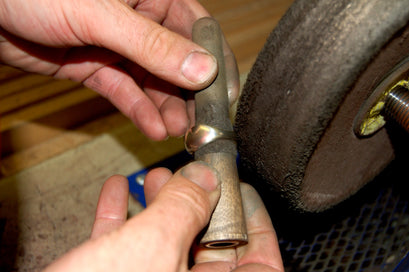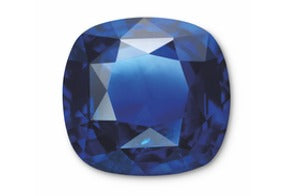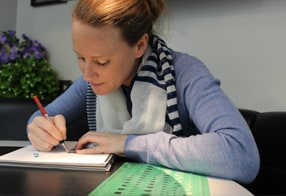YOU HAD SOME ROUGH STONES CUT AND FACETED BY US (HOLTS GEMS). WHAT IS THE STORY BEHIND THE ROUGH STONES?
We moved to Tanzania in 1984 for my Dad's job. My parents were 27 and 30 and my older brother and I were 1 and 3 years old.
Dad is a forester and had been offered a position overseeing the installation of a new skyline (think cable car). The skyline still carries logs down from forestry operations on the Usambara mountains in North East Tanzania.
We lived in a group of houses built by the forestry company next to Mkumbara, Korogwe, which is a couple or so hours from Tanga by car.
My parents didn't actively look to buy gems but he had heard that there was small scale mining in the area from my Dad's colleagues. One day a man turned up at the house selling gems door to door. Although they did not know anything about gems they believed that what they were being offered looked genuine enough and so they decided to buy some.
Having done some of my own research it turns out that we were living very close to the Umba Valley, which is known as a source for a number of gems including garnet, sapphire, ruby, tourmaline and spinel, amongst others. The area we were living in (Korogwe) has also been noted in literature as a source for Rubies. A slip of paper in one of the bags of rough stones that my parents bought has the partial name of a company in Tanga. It is difficult to know exactly where they came from but undoubtedly somewhere in the area. This was in 1985.
Probably due to not knowing anything about them, the gems were put in a drawer with the intention of having them checked at a later date. Over the years they occasionally came out and we'd all have a look and wonder what they were….and put them back again! Part of the reason is that we've moved around quite a lot since Tanzania but have never really lived somewhere with a notable jewellery quarter like Hatton Garden. It was only when I got engaged this year that I remembered the gemstones and I thought perhaps we could do something with them so I brought them to Holts to find out more about them.
It was confirmed that the majority of my parents purchases turned out to be garnets, varying in colour from a deep red to pinkish purple. In addition, there are some amethyst and a few different coloured single stones. Holts checked one of the larger garnets just to confirm what it was, and you also tested what two of the non-specific stones were. One of those turned out to be a fancy sapphire and the other a greenish blue tourmaline. One might say nothing of huge commercial value but an opportunity to create some beautiful jewellery! They certainly have sentimental value as we only lived in Tanzania for three years so they are a unique and special memento from a very specific time in our lives. It is particularly nice to be giving my fiancé something that is so personal.
So far, we have had three stones faceted by Jan which ended up as a cushion cut garnet, a round brilliant cut green tourmaline, and an oval olive green to reddish-orange colour change sapphire.
HOW DID YOU FIND HOLTS? DID WE/JAN MEET EXPECTATION?
I found Holts by researching online. Jan was great and did an excellent job of cutting the stones and interpreting what we were after. Not having much experience in the gem world we relied heavily on his expertise so he made sure to consult us at key stages and we felt we were in safe hands.
WERE YOU NERVOUS AT ALL ABOUT THE PROCESS IE WOULD YOU GET WHAT YOU WANTED? DID YOU THINK IT WOULD BE TOO EXPENSIVE?
Actually I wasn't nervous, no. Because through my research it was clear that Holts have been involved in the gem trade for a long time and you also have a good reputation both with retail customers and with trade. I also saw that you have been cutting stones for some time now. I was concerned about cost but it was not as much as I expected.
HAVE THE STONES TURNED OUT AS EXPECTED OR ARE THEY FAR BETTER THAN YOU THOUGHT?
They are stunning! Before cutting them we were told that the colours would brighten or change but each one has been a nice surprise. The tourmaline went from a pastel green to a very vividly bright green-blue which looks vibrant in any light. Likewise, the garnet went from nearly black to a deep wine-coloured red with an almost electric sparkle. We especially like the shape of the garnet which we probably gave Jan the most freedom on. Working between the inclusions he ended up doing a cushion cut that somehow has modern feel to it. It's also huge!
DID YOU ENJOY THE WHOLE PROCESS? WOULD YOU DO IT AGAIN?
Very much so! It is very exciting because there is an element of not knowing exactly how a rough stone will end up. Inevitably with coloured stones there will be inclusions so how these are worked with or around will influence the final design. I feel like I learnt a lot and now have greater appreciation of cut stones.
I am trying to resist doing more for now! We still haven't tried cutting one of the purplish garnets and there is one I suspect to be another colour change sapphire but stronger on the green end. But first we need to turn the ones we have already had cut into pieces of jewellery.
WHAT ARE YOU PLANNING TO DO WITH THE GEMSTONES?
The tourmaline will end up as a ring for my mum. She likes greens and blues so it is perfect for her.
The garnet will be a necklace for my fiancé. We were considering making it into an engagement ring, that’s what sparked this whole process off, but in the end we felt it was actually too big for a ring! I finally decided on a diamond for the ring so it will be an additional 'engagement necklace'.
We're still undecided what to do with the sapphire. I'm not sure if it is true but I have read that greenish-orange/red colour change sapphires are unique to Tanzania which would be nice.
The process has sparked an interest in gems and jewellery for me. I have always enjoyed drawing and making things so I have started to learn wax carving with the aim of making the necklace. I've already done a beginner’s course and will do some more practice pieces before going on to learn about wax castings for stone setting.


















